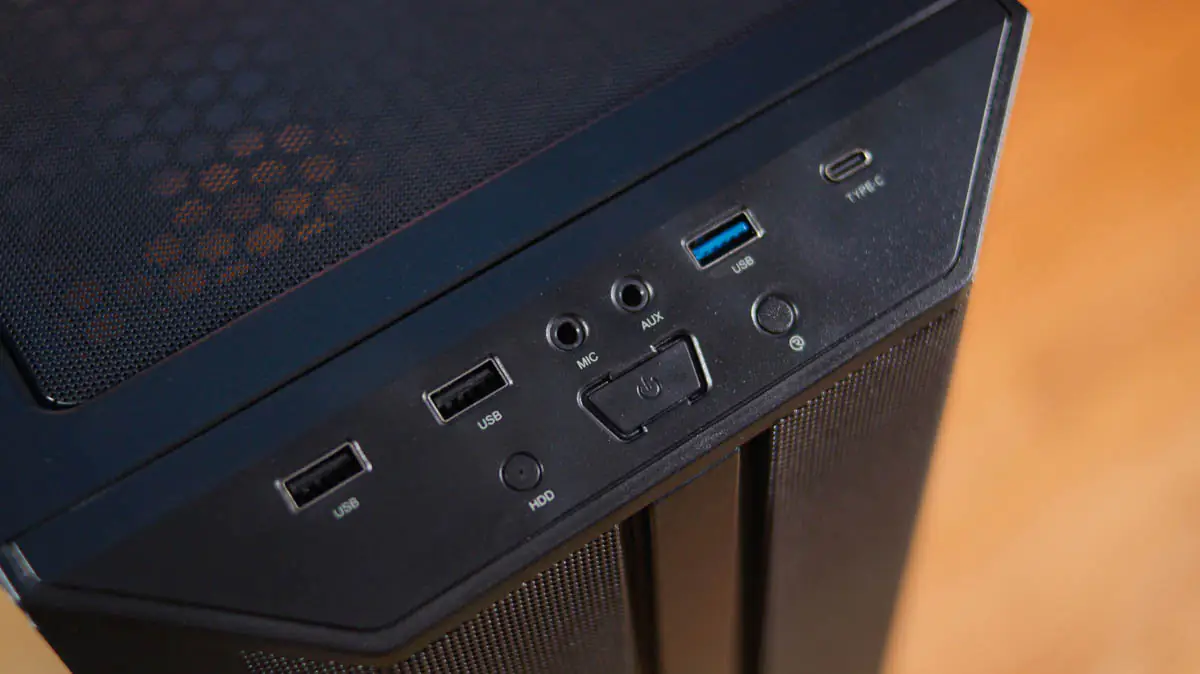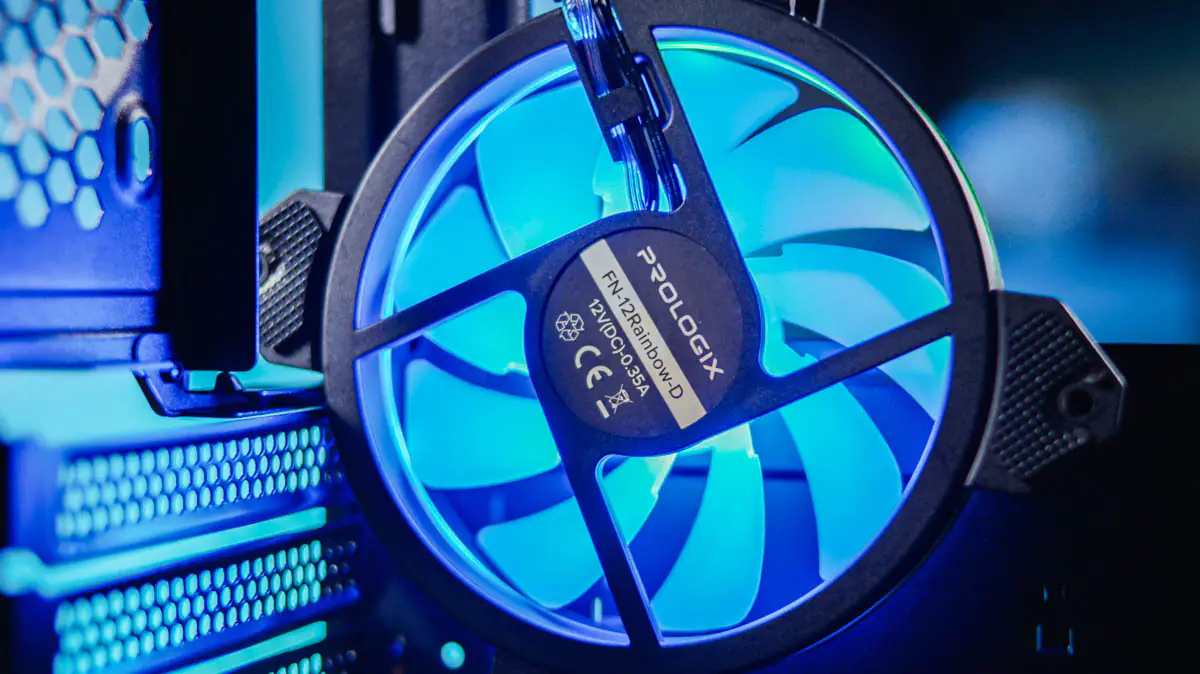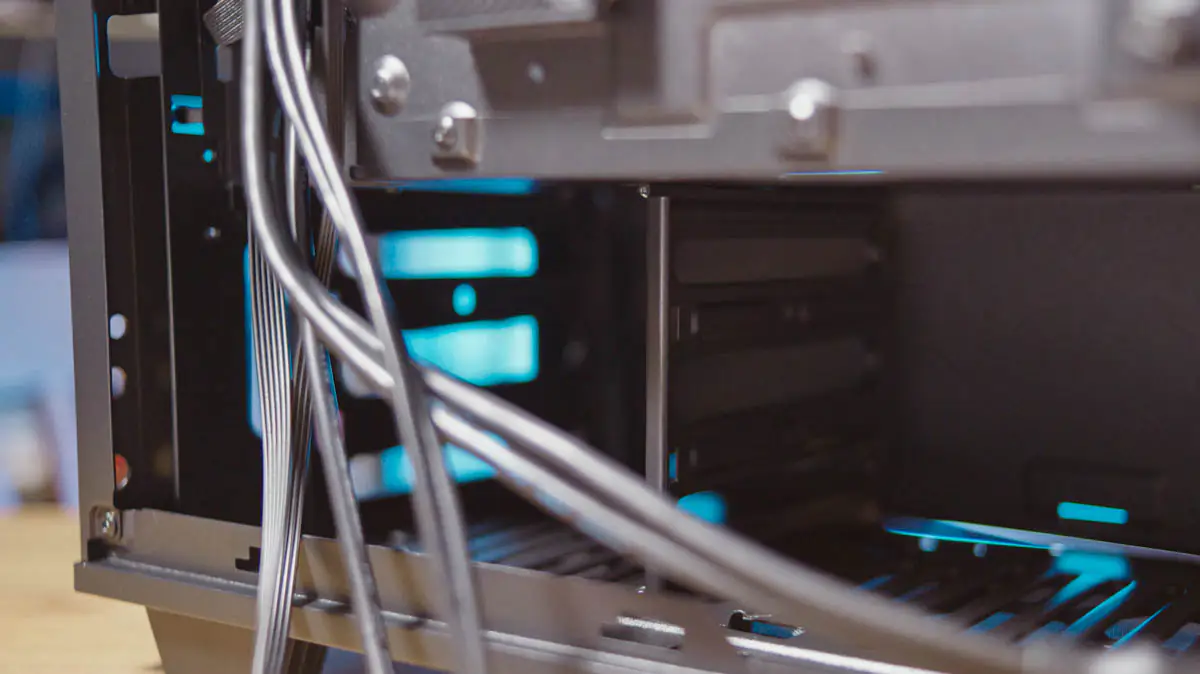© ROOT-NATION.com - Use of content is permitted with a backlink.
The Prologix E122 Tempered Glass & Mesh computer case caught my attention because it’s a relatively expensive model and distinctly gaming-oriented, yet produced by a brand that is primarily known for its “office” products. Overall, Prologix does have some gaming equipment in its lineup, but it’s quite limited compared to their business models. Interestingly, the E122 is the most expensive case the company offers.

Market positioning and price
It costs $67 or €62. Considering that my personal “average budget” starts at $50, this model is no longer budget-friendly but still accessible. To paraphrase MKBHD, “cheap things are getting better, and better things are getting cheaper.”
Package contents
The Prologix E122 Tempered Glass & Mesh comes in standard packaging with solid foam for protection.

The instructions and additional components are located inside the case, and you need to unscrew the screws to access them. The first thing I’ll note is that the screws are NOT captive. They are difficult to loosen, but you need to remove them completely; otherwise, you won’t be able to take off the glass panel. The metal panel can be removed without issue.

Next, there is no direct instruction manual included with the E122. However, similar to the Prologix PLP61024 all-in-one, there is a booklet with a QR code. This code leads to a webpage containing the instructions.

The manual was initially missing from the website, but it was added shortly before this review was published. In any case, I’m providing the link separately, just in case. However, the Prologix E122 Tempered Glass & Mesh pleasantly surprised me with its additional components.

Because in the small box hidden in one of the two HDD slots, I found not only a set of screws and cable ties but also a special RGB cable and even GPU support. For a price of 2800 UAH, I haven’t seen anything like this before.
Exterior of Prologix E122 Tempered Glass & Mesh
Visually, the case is quite interesting. On one hand, it has a restrained design (true to the manufacturer’s style). On the other hand, it features a tempered glass side panel and a rather aggressive front design. I wasn’t sure if it had lighting— but yes, it does, and surprisingly, a lot of attention has been given to it. The lighting is well-controlled and fits seamlessly with the overall aesthetic.

The lighting is managed through a hub located at the back. This hub is probably the strangest one I’ve ever seen. It’s quite unpredictable because it has four ports for 3-pin fans, one port for 4-pin fans, a PWM input for synchronization, five ports for 3-pin ARGB, a dedicated input for ASUS Aura Sync, and a SATA power connector at the bottom. The pinout is provided in the instructions.

The included RGB cable that comes separately in the box is specifically for ASUS Aura Sync. It comes with two 3-pin male-to-male connectors, which I’ve never seen included with any case before.
Periphery
What I didn’t expect is that the peripheral panel at the top of the case consists of four USB ports. Of these, two are Type-A 2.0, one is Type-A 5 Gbps, and one is Type-C 5 Gbps. However, there’s a catch—the last two ports share a single cable, meaning that if you use both simultaneously, you won’t get either full speed or full power.

In addition to the USB ports, there are separate audio jacks, an HDD activity indicator, as well as power and reset buttons. The reset button is connected to the hub for RGB control.
A bit about the instructions
I’ll say a couple of words about the instructions because I’m not sure about their relevance. For instance, it claims that the motherboard standoffs need to be screwed in manually. However, mine came pre-installed in the Prologix E122 Tempered Glass & Mesh straight out of the box. Additionally, the right side panel constantly shows two perforated areas.

One is located near the motherboard, and the other is opposite the mounting locations for the hard drives. The purpose of either of these two areas is unclear to me.

Yes, in older cases, side panel perforations were indeed common, but they usually came with mounting points for fans, as they were positioned opposite the CPU cooler.

In the E122, the mounting points are missing, and the perforation shown in the instructions is drawn on the opposite side. Specifically for my sample, it is completely absent. There is only some perforation at the bottom near the HDD, but there are no mounting points for fans there either.
Compatibility
Moving on, there are mounting locations for up to five 120mm fans or four 140mm fans. Additionally, a pre-installed 120mm Prologix FN12-Rainbow-D model comes with the case. I mention this specifically because it’s not available online. However, the GameMax FN12-Rainbow-D is listed, which is identical to the Prologix FN12-Rainbow-D in every aspect except for the branding.

If this is indeed a rebranding, then the specifications for the GameMax fan are applicable to the Prologix as well. The GameMax fan features a hydrodynamic bearing, operates at a constant speed of 1100±100 RPM with a noise level of 25 dBA, providing an airflow of 36 cubic feet per minute and a pressure of 1.08 mm H₂O.

The Prologix E122 Tempered Glass & Mesh supports liquid cooling with up to 280mm at the top, 280mm at the front, and 120mm at the rear. Once again, we see a situation where the front fans can accommodate up to 360mm together, but the radiator support is limited to 280mm.

My approach to this situation remains unchanged—if the manufacturer doesn’t claim support for 360mm radiators, then something is likely preventing that support. Sure, you might get lucky, and your specific liquid cooling solution may fit in the case. But someone else might not be so fortunate. I can’t evaluate a case based on the principle of a lottery.
Read also: Review of the Prologix PLP61024 Office All-in-One: A Business Machine
Moving on to the positives: there are dust filters at the top (magnetic) and at the bottom (on long rails). However, the front doesn’t have a filter; instead, there’s a metal mesh with plastic reinforcement ribs installed directly in front of it. These ribs will definitely obstruct airflow, reducing the mesh’s effectiveness.

The case’s feet provide a 15mm lift off the floor, and there’s space for the power supply with standoffs made of foam polypropylene and mesh on the fan side.

The case supports motherboards in EATX, ATX, M-ATX, and ITX formats. The maximum CPU cooler height is 170mm, which is excellent. The maximum length for a graphics card is 360mm, but I believe this is at least without front liquid cooling. With it, you’ll have around 330mm. There are seven PCIe expansion slots, which are not breakaway but are secured with screws.

The thickness of the tempered glass is approximately 5mm, while the metal thickness ranges from 0.6 to 0.8mm. The overall dimensions of the case are 443×210×493 mm, and it weighs 6.8 kg. It is compatible with ATX power supplies, but the maximum length is not specified. There is a possibility that longer power supplies may obstruct the drive cage, potentially interfering with the cables.

However, if we’re talking about models like the Xilence XP400R7 or the Cougar ATLAS750/Cougar GEX X2 850, which have dimensions of 150x86x140mm, there shouldn’t be any assembly issues. Considering that the ATLAS750 is a 750-watt model with a Bronze certification, it can be easily paired with a power supply for an RTX 3080.

For the RTX 4000/5000 series, you’ll need models that support PCIe 5.0, such as the GEX X2 850, which is also 140mm long. Regarding storage, you can install two 3.5-inch drives in the bottom bay, and the trays for these drives are equipped with vibration dampers.

There are also two mounting spots for 2.5-inch drives, which are located on the back side of the motherboard.
Assembly
Regarding assembly, I’m pleased to note the ample space on the edges (my pinky fits comfortably), with openings for CPU and motherboard cables. What surprised me the most is the separate plastic cable management module at the back, secured with two clips.

There may be some questions regarding the hub, which only supports 3-pin fans, but having dedicated synchronization with ASUS Aura Sync is certainly a great feature. Don’t forget that the hub has a 4-pin connector, so theoretically, you can also connect PWM fans using splitter adapters. Ultimately, speed synchronization with the motherboard occurs through the PWM connector.
P.S. If your RGB control doesn’t work, make sure the control cable at the top is fully inserted into the hub. Mine was not plugged in all the way.
Conclusions
This case is VERY strange, VERY interesting, and often surprised me. Fortunately, most of the time, it surprised me positively. Yes, it’s quite evident that Prologix is still gaining experience in creating gaming cases.

But when it comes to performance, compatibility, packaging, and overall impressions—at $67, the Prologix E122 Tempered Glass&Mesh proves to be highly competitive. So yes, I recommend it!
Read also:
- be quiet! Pure Rock LP Mini Cooler Review
- Cougar Duoface Pro RGB Computer Case Review
- Cougar FV270 RGB Computer Case Review

